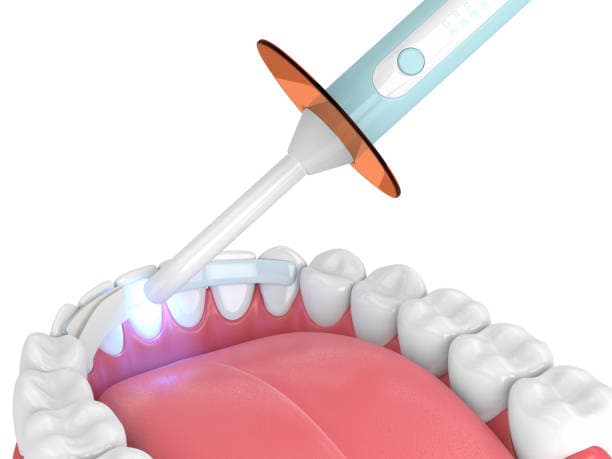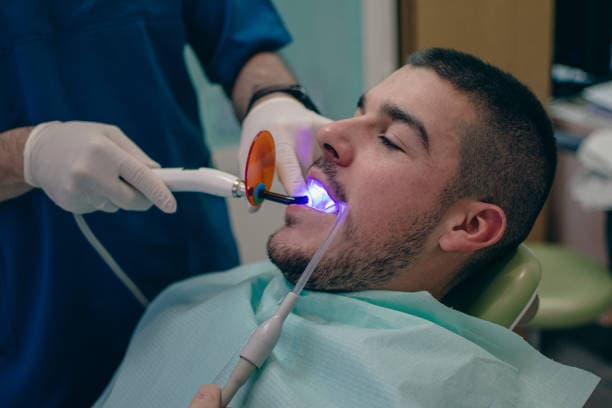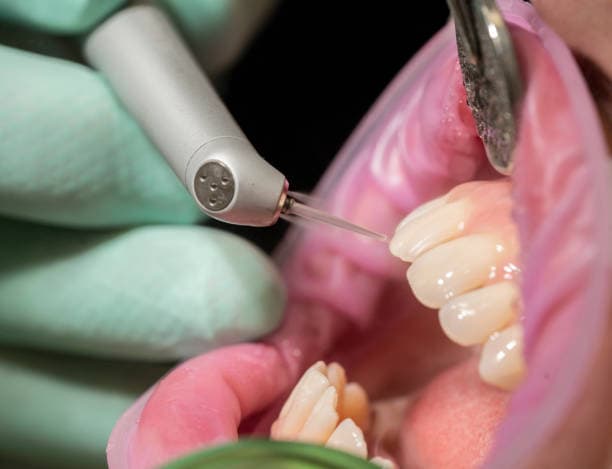Dental bonding is a popular cosmetic dental procedure that involves applying a tooth-colored resin material to the surface of the teeth to improve their appearance and function. This versatile technique can address various dental issues, such as chipped or cracked teeth, gaps between teeth, discoloration, and even minor misalignments.
What Is Teeth Bonding?
Teeth bonding, also known as dental bonding, is a popular and versatile cosmetic dental procedure designed to enhance the appearance and function of teeth. This minimally invasive treatment involves applying a tooth-colored resin material to the surface of the teeth to address various dental issues, such as chips, cracks, gaps, discoloration, and minor misalignments. Teeth bonding is an effective and cost-efficient solution that can significantly improve a patient's smile, often within a single visit to the dentist.
The process of teeth bonding begins with a consultation, during which the dentist assesses the patient's dental health and determines whether bonding is the appropriate treatment. If deemed suitable, the dentist selects a shade of resin that closely matches the natural color of the patient's teeth to ensure a seamless and natural-looking result. The tooth surface is then lightly etched with a mild phosphoric acid solution to create a rough texture, which allows the bonding material to adhere more effectively.
Once the tooth is prepared, the dentist applies a conditioning liquid to further enhance the bond between the tooth and the resin. The tooth-colored resin is then carefully applied to the tooth in layers, allowing the dentist to shape and mold it to achieve the desired appearance. The resin is pliable during this stage, making it easy to sculpt and blend with the natural contours of the tooth. After the desired shape is achieved, a special curing light is used to harden the resin, solidifying it in place.
Following the curing process, the bonded tooth is polished to achieve a smooth and glossy finish that closely resembles the natural enamel. This polishing step ensures that the bonded tooth looks and feels like the surrounding teeth, providing a harmonious and aesthetically pleasing result. The entire procedure typically takes between 30 minutes to an hour per tooth, depending on the complexity of the case.
One of the primary benefits of teeth bonding is its minimally invasive nature. Unlike other dental procedures, such as veneers or crowns, bonding usually requires little to no removal of the natural tooth structure. This preserves the integrity of the tooth while still providing significant cosmetic improvements. Additionally, teeth bonding is relatively painless, often requiring no anesthesia unless the bonding is being used to fill a decayed tooth.
Teeth bonding offers numerous advantages, including affordability, quick results, and the ability to address a wide range of dental issues. It is an ideal option for patients seeking a simple yet effective way to enhance their smile without the need for extensive dental work. With proper care and maintenance, bonded teeth can last for several years, providing patients with a lasting improvement in their dental aesthetics and overall confidence.

When is dental bonding recommended?
Chipped or Cracked Teeth: Dental bonding is frequently recommended to repair minor chips or cracks in the teeth. The bonding material can be molded and shaped to fill in the damaged areas, restoring the tooth's appearance and preventing further damage.
Discolored Teeth: For patients with teeth that are discolored or stained and do not respond well to traditional whitening treatments, dental bonding can provide an effective solution. The resin material can be matched to the natural color of the patient's teeth, creating a uniform and aesthetically pleasing appearance.
Gaps and Spaces: Dental bonding is also recommended to close small gaps or spaces between teeth. This technique is an excellent alternative to orthodontic treatments for minor spacing issues, providing a quick and cost-effective solution.
Misshapen or Uneven Teeth: Patients with misshapen or uneven teeth can benefit from dental bonding, which allows the dentist to reshape and contour the teeth for a more harmonious and balanced smile.
Tooth Lengthening: For teeth that appear too short or are worn down, dental bonding can be used to lengthen the teeth and improve their overall proportions. This is particularly beneficial for patients seeking a more even and symmetrical smile.
Protecting Exposed Roots: In cases where gum recession has exposed the roots of the teeth, dental bonding can be used to cover the exposed areas and protect them from sensitivity and decay.
Cavities and Fillings: Dental bonding is also used to fill small cavities and replace old, unsightly metal fillings. The tooth-colored resin provides a more natural appearance and blends seamlessly with the surrounding teeth.

Types of Dental Bonding Treatments
There are several types of dental bonding treatments, each with its unique applications and benefits. The primary types of dental bonding include direct dental bonding, composite veneer bonding, and indirect dental bonding.
Direct Dental Bonding: Direct dental bonding is the most common type of bonding treatment and involves the direct application of a tooth-colored resin material to the surface of the teeth. This procedure is often used to repair minor chips, cracks, gaps, and discoloration, as well as to reshape misshapen or uneven teeth. The process begins with the dentist selecting a resin color that closely matches the patient's natural tooth shade. The tooth surface is then lightly etched and a conditioning liquid is applied to ensure the bonding material adheres properly. The resin is carefully applied, molded, and shaped to achieve the desired appearance. Once the resin is in place, it is hardened using a special curing light. Finally, the dentist polishes the bonded tooth to achieve a smooth and natural-looking finish. Direct dental bonding is a quick, minimally invasive, and cost-effective solution that can often be completed in a single visit.
Composite Veneer Bonding: Composite veneerbonding, also known as composite resin veneers, is a type of bonding treatment that involves applying a thin layer of tooth-colored resin material to the front surface of the teeth. This procedure is often used to address more extensive cosmetic issues, such as significant discoloration, larger gaps, and more noticeable chips or cracks. Composite veneers can also be used to improve the overall shape and alignment of the teeth. The process is similar to direct bonding, with the resin material being carefully applied, sculpted, and hardened using a curing light. Composite veneers offer an affordable alternative to porcelain veneers, providing patients with a beautiful and natural-looking smile without the need for extensive tooth preparation or multiple dental visits.
Indirect Dental Bonding: Indirect dental bonding is a more involved process that typically requires two dental visits to complete. This type of bonding is often used for larger restorations, such as inlays, onlays, or crowns, which require more precise fabrication. During the first visit, the dentist prepares the tooth by removing any decay or damaged areas and taking an impression of the tooth. This impression is sent to a dental laboratory, where a custom-made restoration is fabricated from composite resin or other materials. At the second visit, the dentist bonds the restoration to the tooth using a strong adhesive and a curing light. Indirect dental bonding offers the advantage of a more durable and long-lasting restoration, while still providing the aesthetic benefits of tooth-colored materials.

Teeth Bonding Benefits and Risks
One of the primary benefits of teeth bonding is its ability to enhance the appearance of teeth quickly and effectively. This procedure is ideal for addressing a variety of cosmetic issues, such as chipped or cracked teeth, discoloration, gaps, and minor misalignments. Teeth bonding is a relatively simple and minimally invasive procedure that typically requires little to no removal of the natural tooth structure. This preservation of the tooth's integrity makes bonding an attractive option compared to other cosmetic treatments like veneers or crowns. Additionally, teeth bonding is usually completed in a single visit to the dentist, making it a convenient option for patients seeking immediate results. The procedure is also cost-effective, offering a more affordable solution for improving the smile without sacrificing quality or aesthetics.
While teeth bonding offers many advantages, it is not without its risks and potential drawbacks. One of the main risks is the durability of the bonding material. The resin used in teeth bonding is not as strong as natural tooth enamel or other restorative materials like crowns or veneers. As a result, bonded teeth are more susceptible to chipping, cracking, or staining over time, especially if exposed to habits such as biting on hard objects, chewing ice, or consuming staining substances like coffee, tea, or tobacco. Additionally, the bonding material may not last as long as other dental restorations, typically requiring touch-ups or replacements every few years. Another risk is that teeth bonding may not be suitable for more extensive dental issues or significant structural damage, as the material may not provide sufficient strength or support. In such cases, alternative treatments like crowns or veneers may be recommended.

Dental Bonding Alternatives
Porcelain Veneers: Porcelain veneers are thin shells of medical-grade ceramic that are custom-made to fit over the front surface of the teeth. They are an excellent option for addressing issues such as discoloration, minor misalignments, gaps, chips, and worn-down teeth. Porcelain veneers are highly durable and resistant to staining, providing a long-lasting and aesthetically pleasing result. The process involves minimal removal of the natural tooth structure, and the veneers are bonded to the teeth using a strong adhesive. While more expensive than dental bonding, porcelain veneers offer superior aesthetics and longevity, making them a popular choice for patients seeking a significant enhancement to their smile.
Dental Implants: Dental implants are a permanent solution for replacing missing teeth. The procedure involves surgically placing a titanium post into the jawbone, which serves as an artificial tooth root. Once the implant has integrated with the bone, a custom-made crown is attached to the post, restoring the appearance and function of the missing tooth. Dental implants provide excellent stability and durability, mimicking the look and feel of natural teeth. They also help preserve the jawbone and prevent bone loss that can occur with missing teeth. While the process is more invasive and time-consuming than dental bonding, dental implants offer a long-term solution for tooth replacement with outstanding functional and aesthetic results.
Dental Crowns: Dental crowns, also known as caps, are used to restore the shape, size, and strength of a damaged or decayed tooth. Crowns are custom-made to fit over the entire visible portion of the tooth, providing protection and improving its appearance. They are typically made from materials such as porcelain, ceramic, metal, or a combination of these. Dental crowns are an excellent option for teeth with extensive damage or decay, offering durability and strength while maintaining a natural appearance. The process involves preparing the tooth by removing any damaged or decayed areas, taking an impression, and placing a temporary crown until the permanent one is ready. While more invasive than dental bonding, crowns provide superior protection and long-lasting results.

Conclusion
In conclusion, dental bonding is a highly effective and versatile cosmetic dental procedure that offers numerous benefits for enhancing the appearance and function of teeth. By utilizing a tooth-colored resin material, dental bonding can address a wide range of dental issues, including chips, cracks, discoloration, gaps, and minor misalignments. This minimally invasive and cost-effective treatment provides quick and natural-looking results, often completed in a single visit. While there are some risks associated with the durability and potential for staining of the bonding material, the advantages of improved aesthetics, preservation of natural tooth structure, and overall convenience make dental bonding a popular choice for many patients. With proper care and maintenance, bonded teeth can provide a lasting enhancement to one's smile and boost self-confidence.
Read More